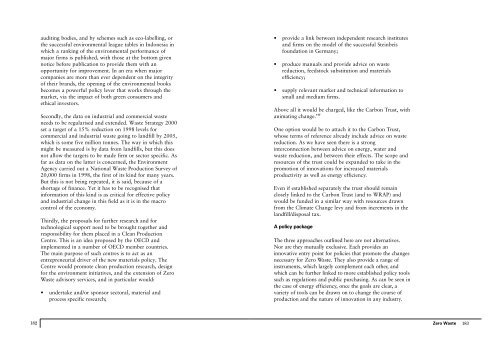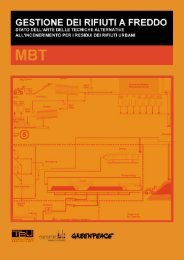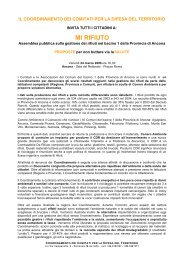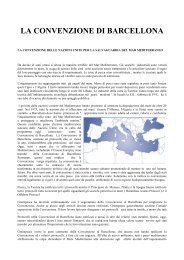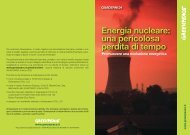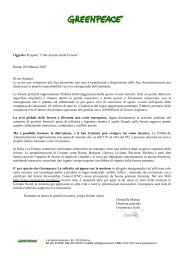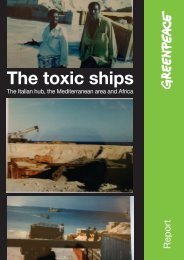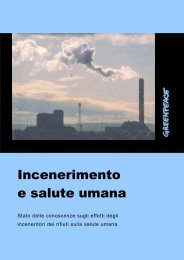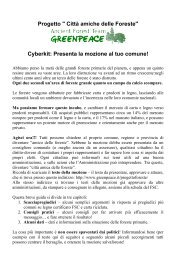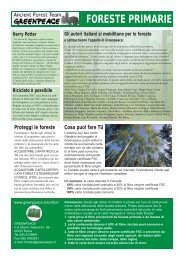Zero Waste by Robin Murray, Greenpeace Environmental Trust 2002
Zero Waste by Robin Murray, Greenpeace Environmental Trust 2002
Zero Waste by Robin Murray, Greenpeace Environmental Trust 2002
You also want an ePaper? Increase the reach of your titles
YUMPU automatically turns print PDFs into web optimized ePapers that Google loves.
auditing bodies, and <strong>by</strong> schemes such as eco-labelling, or<br />
the successful environmental league tables in Indonesia in<br />
which a ranking of the environmental performance of<br />
major firms is published, with those at the bottom given<br />
notice before publication to provide them with an<br />
opportunity for improvement. In an era when major<br />
companies are more than ever dependent on the integrity<br />
of their brands, the opening of the environmental books<br />
becomes a powerful policy lever that works through the<br />
market, via the impact of both green consumers and<br />
ethical investors.<br />
Secondly, the data on industrial and commercial waste<br />
needs to be regularised and extended. <strong>Waste</strong> Strategy 2000<br />
set a target of a 15% reduction on 1998 levels for<br />
commercial and industrial waste going to landfill <strong>by</strong> 2005,<br />
which is some five million tonnes. The way in which this<br />
might be measured is <strong>by</strong> data from landfills, but this does<br />
not allow the targets to be made firm or sector specific. As<br />
far as data on the latter is concerned, the Environment<br />
Agency carried out a National <strong>Waste</strong> Production Survey of<br />
20,000 firms in 1998, the first of its kind for many years.<br />
But this is not being repeated, it is said, because of a<br />
shortage of finance. Yet it has to be recognised that<br />
information of this kind is as critical for effective policy<br />
and industrial change in this field as it is in the macro<br />
control of the economy.<br />
Thirdly, the proposals for further research and for<br />
technological support need to be brought together and<br />
responsibility for them placed in a Clean Production<br />
Centre. This is an idea proposed <strong>by</strong> the OECD and<br />
implemented in a number of OECD member countries.<br />
The main purpose of such centres is to act as an<br />
entrepreneurial driver of the new materials policy. The<br />
Centre would promote clean production research, design<br />
for the environment initiatives, and the extension of <strong>Zero</strong><br />
<strong>Waste</strong> advisory services, and in particular would:<br />
• undertake and/or sponsor sectoral, material and<br />
process specific research;<br />
• provide a link between independent research institutes<br />
and firms on the model of the successful Steinbeis<br />
foundation in Germany;<br />
• produce manuals and provide advice on waste<br />
reduction, feedstock substitution and materials<br />
efficiency;<br />
• supply relevant market and technical information to<br />
small and medium firms.<br />
Above all it would be charged, like the Carbon <strong>Trust</strong>, with<br />
animating change. 117<br />
One option would be to attach it to the Carbon <strong>Trust</strong>,<br />
whose terms of reference already include advice on waste<br />
reduction. As we have seen there is a strong<br />
interconnection between advice on energy, water and<br />
waste reduction, and between their effects. The scope and<br />
resources of the trust could be expanded to take in the<br />
promotion of innovations for increased materials<br />
productivity as well as energy efficiency.<br />
Even if established separately the trust should remain<br />
closely linked to the Carbon <strong>Trust</strong> (and to WRAP) and<br />
would be funded in a similar way with resources drawn<br />
from the Climate Change levy and from increments in the<br />
landfill/disposal tax.<br />
A policy package<br />
The three approaches outlined here are not altern a t i v e s .<br />
Nor are they mutually exclusive. Each provides an<br />
innovative entry point for policies that promote the changes<br />
n e c e s s a ry for <strong>Zero</strong> <strong>Waste</strong>. They also provide a range of<br />
i n s t ruments, which largely complement each other, and<br />
which can be further linked to more established policy tools<br />
such as regulations and public purchasing. As can be seen in<br />
the case of energy eff i c i e n c y, once the goals are clear, a<br />
variety of tools can be drawn on to change the course of<br />
p roduction and the nature of innovation in any industry.<br />
182<br />
<strong>Zero</strong> <strong>Waste</strong><br />
183


